Similarly, difficulties with joint attention (i.e. when people are attending to the same thing at the same time) will mean fewer opportunities for a child to learn about things in the environment around them. It is through looking at something together and the adult commenting or talking about what they are seeing, that helps a child learn about the world and attach meaning to words (e.g. both looking at the dog through the window and saying “dog”).
Children who have difficulty in the development of pre-language skills may go on to have verbal language and interaction difficulties. Identifying and working on the development of pre-language skills at an early age can prevent difficulties with verbal language later in the child’s life.
What are the building blocks necessary to develop talking readiness (pre-language) skills?
- Looking and Listening: As soon as a baby is born they will watch their mother’s face. A child learns to discriminate human faces and recognise which ones are most important. The ability to sustain eye contact will help the baby gain information about language from the mouth and face. The same applies to listening: the child learns to recognise the human voice and determine which ones are the most important. The ability to filter out the human voice from background noise is a complex skill.
- Turn-taking: Turn-taking develops from the first weeks when the parent interprets the baby’s noises, smiles and movements and adds sounds, actions and words. The parent begins to leave gaps for the baby to make a response. Eventually a baby and their parent take turns with sounds, actions and later, words.
- Smiling: From about 6 weeks a baby begins to smile. This further fosters social interaction because it is much more rewarding to interact when you get a response. Adults will initiate more communication with responsive babies.
- Anticipation: By 3 months a baby shows excitement at the sounds associated with different situations (e.g. running bathwater, approaching voices), showing a developing understanding of situations and an awareness of gesture and facial expression. From birth, babies build up the understanding that gestures and facial expressions carry meaning.
- Imitating: Imitating others fosters cooperation as well as social interaction. By 9 months, a child is able to copy hand clapping and playful vocal sounds (e.g. smacking lips, coughing, brrr). By developing copying skills a child is more likely to have success at imitating words and sentences as their language develops.
- Joint attention: The ability to follow another person’s focus of attention and also to direct someone else’s attention to what you are interested (i.e. so that you both attend to the same thing at the same time) is a vital communication skill. By 12 months, a child points with their index finger at objects or events which are of interest. This further encourages adults to engage with the child and to name objects/events for the child. For most children, once words start to fill these ‘pointing’ experiences, pointing becomes redundant and is discarded. All of these non-verbal skills continue to develop as the child’s verbal skills emerge. Non-verbal and verbal communication skills are interlinked during all language learning.
- Understanding: In the first 12 months understanding is based on cues in the environment (e.g. direction of eye gaze, facial expression, pointing and gestures). A child will develop an understanding of ‘no’ and ‘bye’ by 12 months. For many children the main difficulty in understanding is that adults talk so fast that the child often does not have sufficient time to pick out the important words.
- Expression: The baby will be communicating non-verbally through looking, facial expressions, body language, vocalisation and gesture. First words will appear at around 12- 15 months.
How can you tell if my child has problems with talking readiness (pre-language skills)?
If a child has difficulties with pre-language skills they might not:
- Give eye contact or it is fleeting.
- Respond with a social smile.
- Use different vocalisations and sounds to indicate being happy, sad, hungry, cross, tired.
- Play with sounds or babble as a baby.
- Copy facial expressions or gestures.
- Use voice or gesture to get attention.
- Attempt to show you things or draw your attention to something of interest to them.
- Enjoy others participating in their play.
- Respond to different expressions or tones of voice (e.g. angry face/voice versus happy face/voice).
What other problems can occur when a child has talking readiness (pre-language) difficulties?
When a child has pre-language difficulties, they might also have difficulties with:
- Behaviour: The actions of a person, usually in relation to their environment. A child may become easily frustrated as they do not have the foundation skills to learn or use language.
- Play skills: Voluntary engagement in self motivated activities that are normally associated with pleasure and enjoyment where the activities may be, but are not necessarily, goal oriented.
- Social skills: Determined by the ability to engage in reciprocal interaction with others (either verbally or non-verbally), to compromise with others, and be able to recognize and follow social norms.
- Receptive language (understanding): Comprehension of language.
- Expressive language (using language): The use of language through speech, sign or alternative
- forms of communication to communicate wants, needs, thoughts and ideas. The use of words may be delayed as a child hasn’t learnt the skills to copy words and language.
- Attention and concentration: Sustained effort, doing activities without distraction and being able to hold that effort long enough to get the task done.
What can be done to improve talking readiness (pre-language) skills?
- Play: Spend time playing with the baby/child everyday.
- Talk to the child often throughout the day. Talk about things you are doing so the child learns to link the words with the actions.
- Turn off back ground noise in the home (e.g. T.V, radio, music) to allow the child to better distinguish a person’s voice.
- Face-to-face: Get face to face with the child when talking so they can see how to form the words you are saying by watching your mouth. They will also learn about facial expressions.
- Simplify the language you use with the baby/child.
- Joint-attention: Follow the child’s gaze or interest and talk about what they are looking at using simple language.
- Vocal Intonation: Vary your voice and intonation when talking to help gain the child’s attention.
What activities can help improve talking readiness (pre-language) skills?
- Peek-a-boo: Play peek a boo games to develop eye contact.
- Eye-contact: Bring toys/items next to your face when naming them or playing with them to encourage the child to look at your face.
- Play fun games such as putting on hats, glasses or scarves to encourage the child to look at your face.
- Listen to sounds around the house or in the park together and talk about the sounds you hear.
- Read stories together to develop listening and attention (don’t worry if you don’t finish the book, looking at one or two pages is better than none).
- Interactive Games: Play lots of interactive games, like “Chasey”, “Tickling”, “Hide and Seek”.
- Sing songs and nursery rhymes from a very young age. Songs that have actions are very useful because it teaches a child to copy actions.
- Turn-taking: Play simple turn-taking games, like rolling a ball back and forth, taking turns building a tower.
If your child has difficulties with getting ready to talk (pre-language) skills, it is recommended they consult a Speech-Language Therapist. When children have difficulties with pre-language skills, they might also have difficulties with learning to talk, developing peer relationships, understanding rules and expectations within the classroom, play or work environment, and duffuctlies with social communication, such as eye contact, appropriate distance when talking to someone, turn-taking within a conversation. REMEMBER THE BEST INTERVENTION IS EARLY INTEVENTION!
Published by - Anna Keno, Speech Language Therapist (BLST, MNZSTA, Reg.EPCNZ) Giant Leaps® NZ


